Upselling vs Cross-Selling: How to Master Both for Your Dropshipping Store
If you're managing an online store, you're likely familiar with the terms "upselling" and "cross-selling."
Both strategies can be equally powerful in helping you increase revenue and improve the overall shopping experience of your customers.
But what exactly are they, and how can they supercharge your sales?
In this guide, we'll break down the difference between upselling and cross-selling and provide you with actionable tips on how to effectively put into practice both strategies.
Check out: Best ways to promote your online boutique
:format(webp)/https%3A%2F%2Fbrandsgateway.com%2Fapp%2Fuploads%2F2024%2F06%2Fbanner.jpg)
Looking for a reliable dropshipping or wholesale supplier?
Join us today for top-quality products and unbeatable prices.
What is the difference between upselling and cross-selling?
Upselling and cross-selling are two essential sales techniques used by businesses to boost revenue and enhance customer satisfaction.
So, how exactly do they differ from one another?
What is upselling?
Upselling is a sales technique used to persuade customers to purchase a more expensive or premium version of the product they are already considering or have already purchased.
The goal of upselling is to increase the total value of the sale by encouraging customers to upgrade to a higher-priced product that offers additional features, benefits, or enhanced functionality compared to their original choice.
What is cross-selling?
Cross-selling refers to suggesting related or complementary items to what the customer is already purchasing.
The objective of cross-selling is to maximize the value of each customer transaction by suggesting products that are likely to be of interest based on the customer’s preferences, needs, or purchasing history.
How to upsell?
Implementing effective upselling strategies can significantly impact your dropshipping store’s revenue and customer satisfaction.
Here are three proven techniques to master the art of upselling:
Offer limited deals
A powerful way to encourage customers to upgrade to a higher-priced trending product is by offering limited-time deals or promotions.
By creating a sense of urgency, you can prompt customers to make a purchasing decision sooner rather than later.
Take as an example the retail store Nordstrom.
By using a banner image in a bright red color to announce their limited-time sale, Nordstrom creates a sense of urgency and excitement around their promotions, prompting customers to act quickly to secure the best deals.
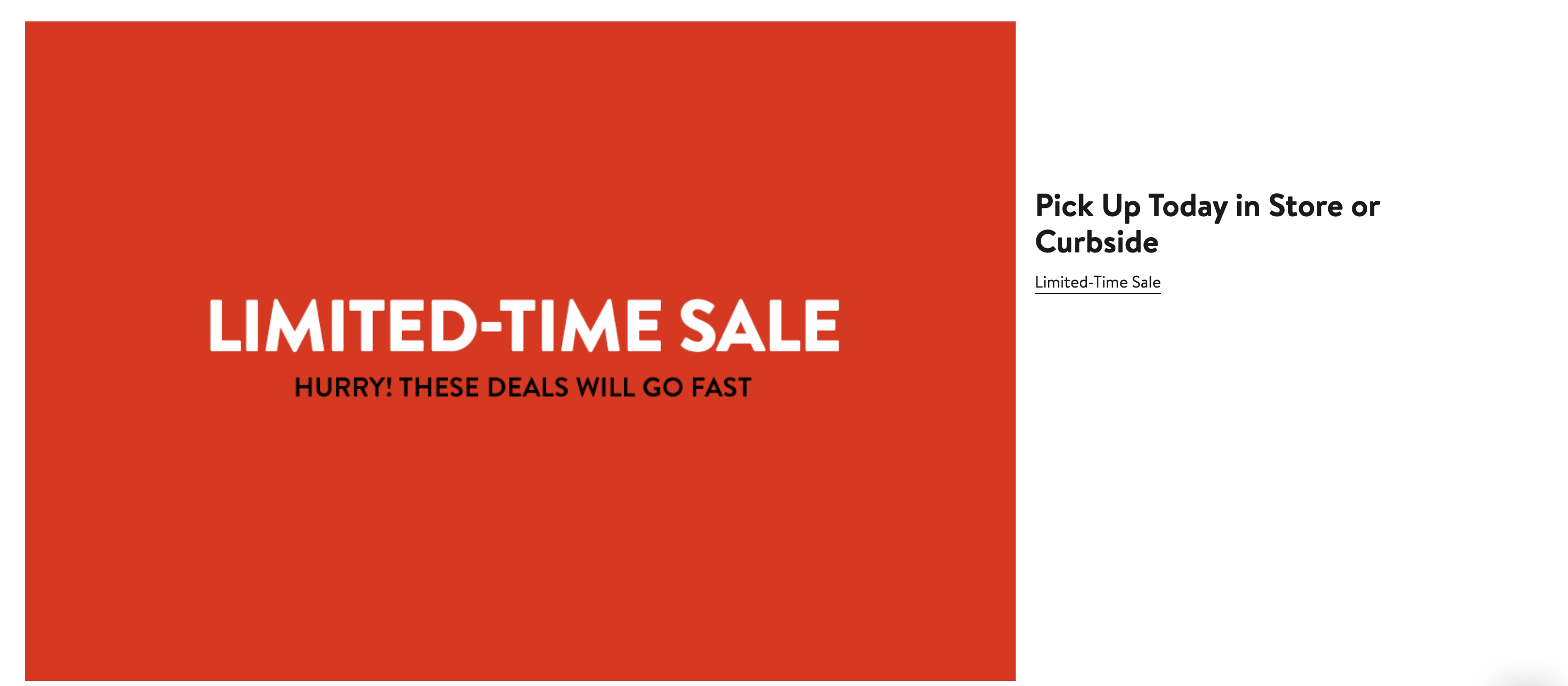
Saks Fifth Avenue uses a similar approach, displaying a bright orange banner on their landing page announcing a friends and family discount on new arrivals until a certain date.
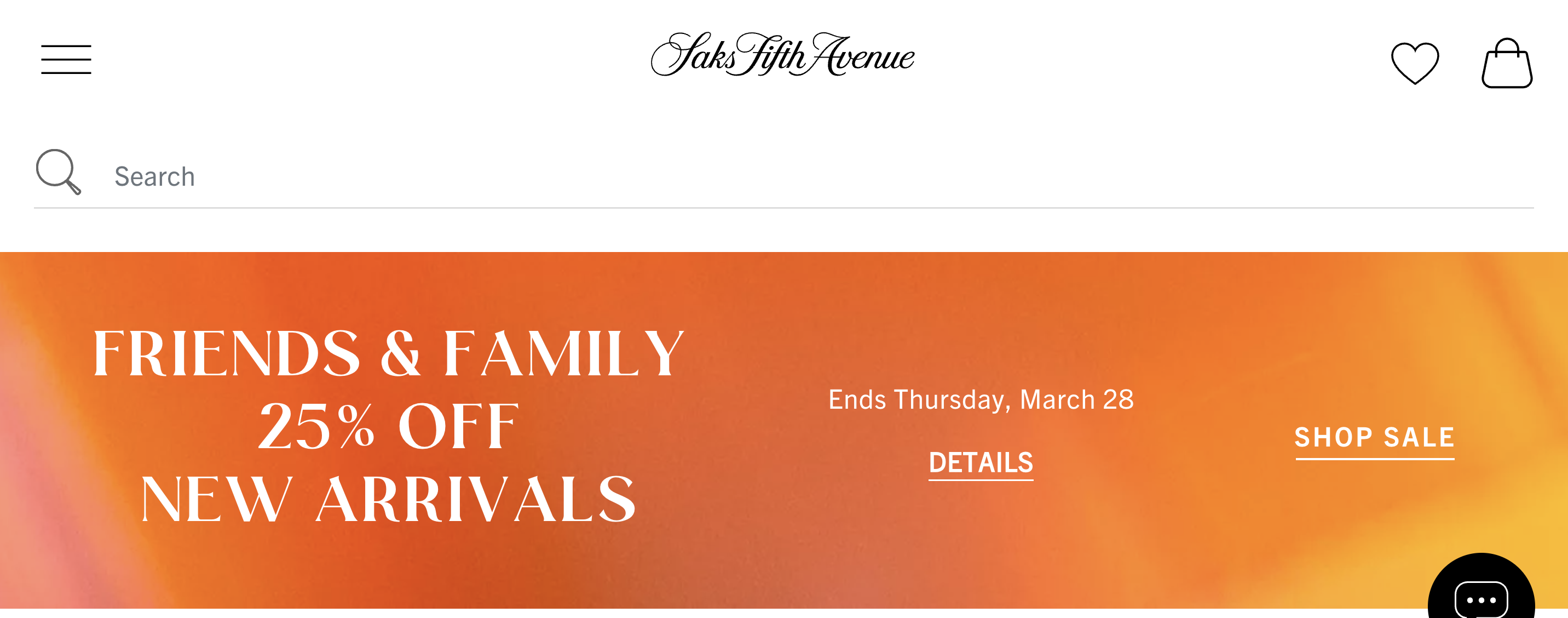
Instead of using flashy banners, SSENSE, on the other hand, chooses to go with a simpler strategy, by displaying a short message at the very top of their homepage.

Showcase premium alternatives
Another effective upselling technique is to showcase premium alternatives alongside the standard options.
When customers see the additional features and benefits offered by the higher-priced products, they may be more inclined to upgrade.
When presenting such products, it’s crucial to emphasize why higher-end items are worth considering. Here’s how you can do it:
- Features: Explain how investing a little more can lead to greater satisfaction thanks to better quality or features.
- Descriptions: Create compelling descriptions that highlight the advantages of these premium options.
- Visuals: Use high-quality images and videos to visually convey the superiority of these products. Consider using 360-degree views or video demonstrations to give shoppers a close look at what they’re upgrading to. For this purpose, feel free to take advantage of enhancing your content with video apps and photo editing tools.
For example, eyewear store Warby Parker has taken quite a unique approach to this technique.
When clicking on any of their products, customers are offered to promote different features of the products.
In the product below, customers can either buy the product for $95 or upgrade it for any of the other three options.

Leverage customer reviews
Customer reviews and testimonials can be an equally powerful tool for upselling.
When customers see positive feedback from others who have purchased the higher-priced product, it can help alleviate any doubts or objections they may have.
Positive reviews from other buyers can significantly influence consumer behavior, more specifically, on up to 31% of customers, reports Invesp.
What you can do for your dropshipping business is create a ‘Customer review’ page where satisfied customers can share their positive experiences and feedback about your products and services, something that the online store KIDORIMAN has implemented.

An equally good alternative is displaying reviews alongside products like the clothing brand Gap has done, where customer testimonials provide valuable social proof and help potential buyers make a decision based on real experiences.
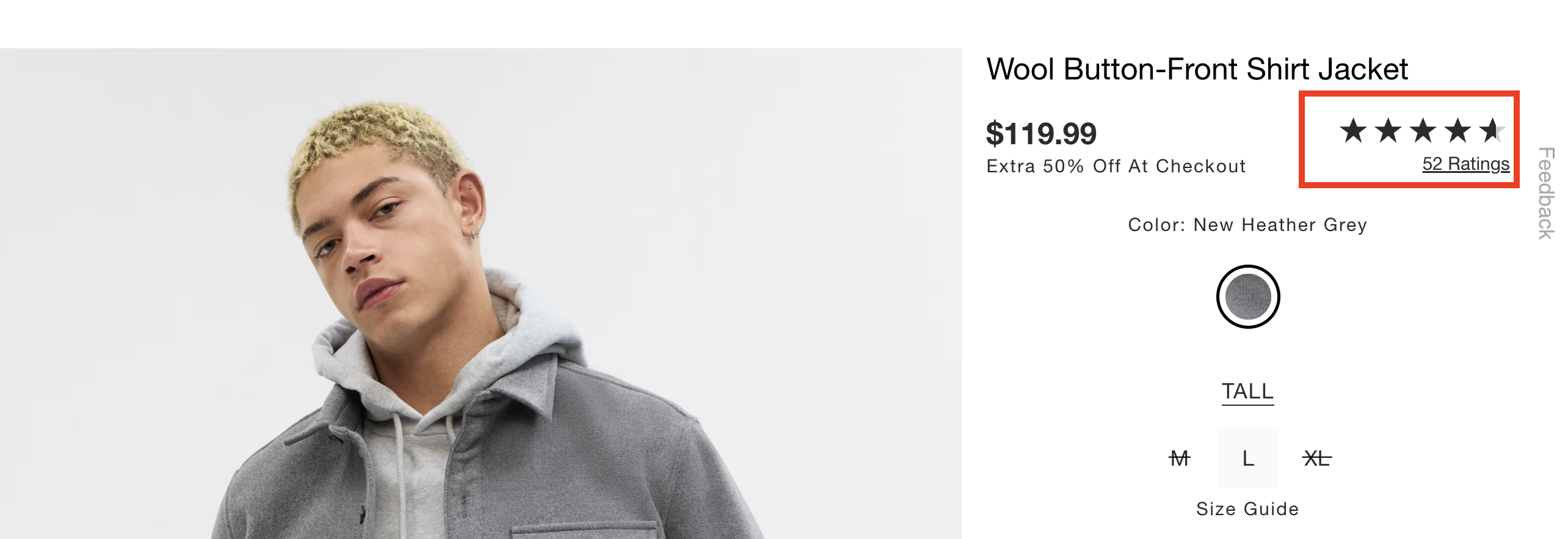
How to cross-sell?
Now, let’s get into some effective cross-selling techniques for your dropshipping store.
Offer product suggestions
Create a more personalized shopping experience by suggesting related products based on what your customers are currently purchasing.
By analyzing your sales data, you can identify popular product combinations and tailor your suggestions accordingly.
For example, on their checkout page, The Outnet has incorporated a ‘You May Also Like’ section where the store lists products in a similar style and design to the ones the customer is purchasing.
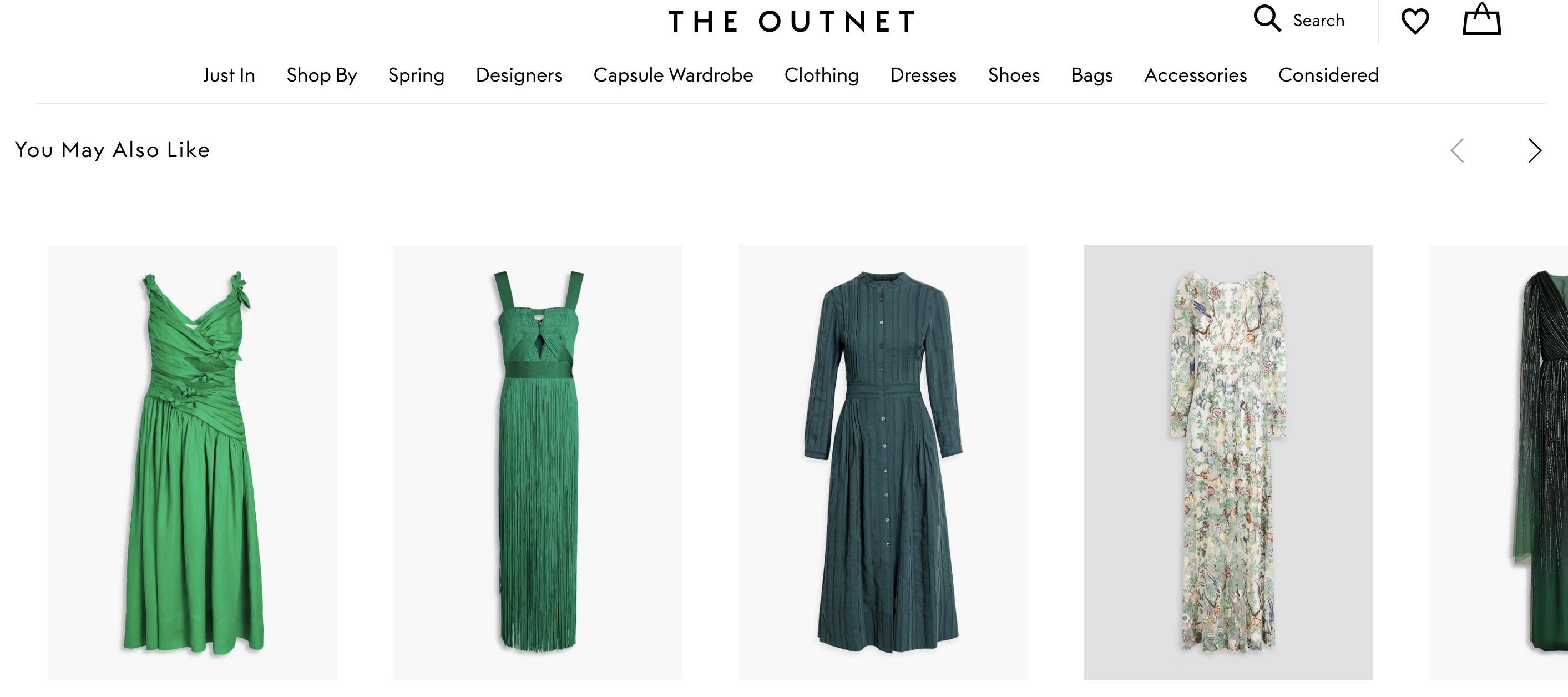
Present complementary products
Complementary products are usually closely related to the main purchase.
By presenting these complementary products alongside the main purchase, you make it convenient for customers to find everything they need in one place, increasing the likelihood of additional sales.
Harrolds have been mastering cross-selling by showing a ‘Styled with’ section on their checkout page where, based on the products being purchased, the store suggests additional products to complete an outfit combination.
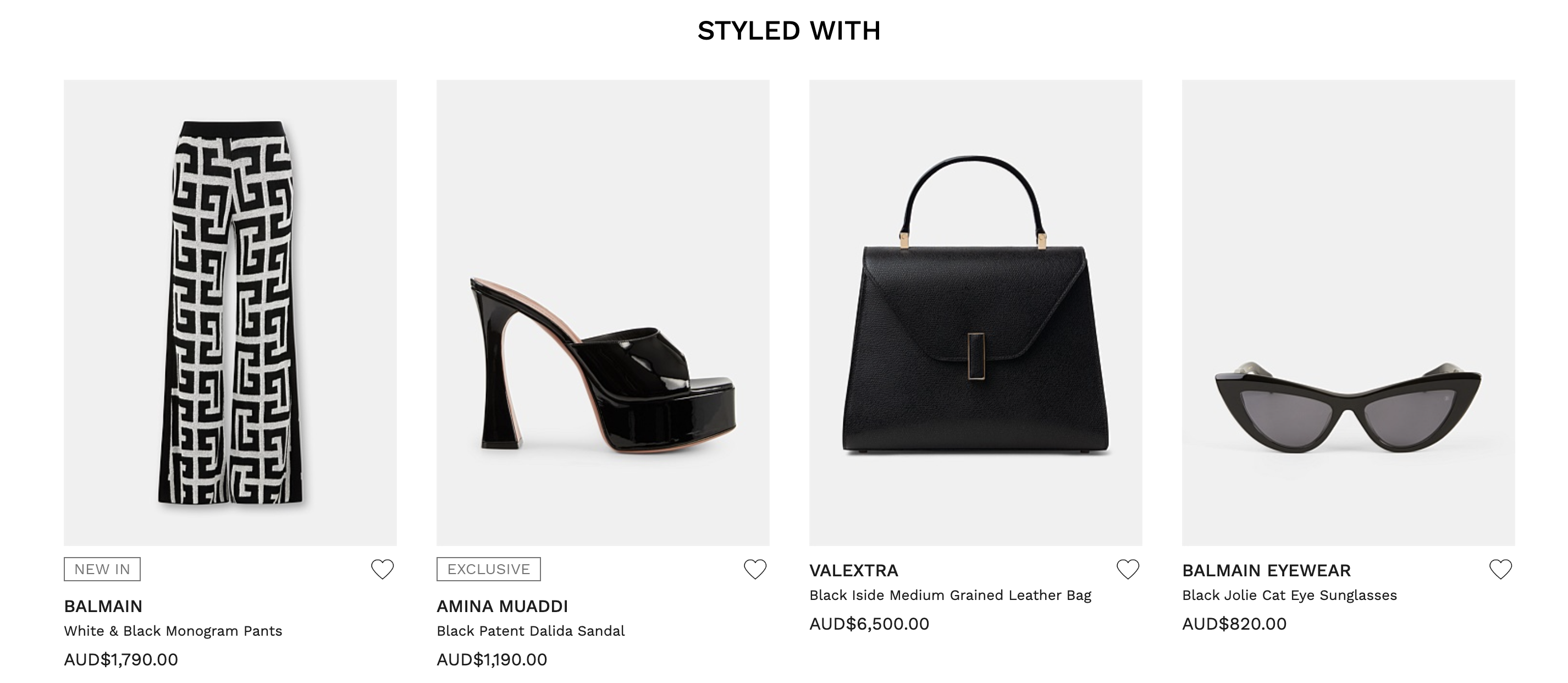
Send out post-purchase emails
After your customers have clicked the ‘buy’ button, your relationship with them doesn’t have to end there.
Post-purchase emails are a fantastic way to keep the conversation going and bring them back for more.
Following a transaction, you can send targeted emails featuring product recommendations or exclusive offers based on the customer’s purchase history.
Remember, the key here is personalization. Use data from past shopping behavior to make these recommendations as relevant as possible.
A post-purchase email will help you keep the momentum going and make your customers feel valued—not just as buyers but as individuals whose tastes and preferences matter to you.
If you’re out of email ideas or don’t have enough time to come up with an engaging copy, leveraging AI tools, such as ChatGPT, can give you a hand in creating a copy base for personalized post-purchase email campaigns specifically for your business.
The more information you feed ChatGPT, the more customized will the content be.
Feel free to use the prompts below.
PROMPT 1
Product recommendations
Hey [Customer’s name],
We hope you’re loving your new [Product purchased]!
Based on your choice, we think you might also enjoy [Related product].
As a thank-you for your recent purchase, here’s an exclusive [discount value] off [Related product].
Check out what others are saying about it:
[Include relevant customer reviews]
Happy shopping,
[Your store’s name]
PROMPT 2
Bundle deal
Hey [Customer’s name],
Thank you for choosing us for your recent purchase!
As a valued customer, we wanted to offer you an exclusive opportunity to enhance your shopping experience.
With our bundle deal, you can complete your collection and enjoy even greater savings.
Purchase [Product A] and [Product B] together and unlock a generous [discount value] on your entire order.
Upgrade your shopping cart today and take advantage of unbeatable savings!
Thank you for choosing [Your store’s name].
PROMPT 3
Access to new products
Hey [Customer’s name],
We’re thrilled you chose us for your recent purchase!
As a token of appreciation, here’s an exclusive sneak peek at our latest arrivals.
Don’t miss out — shop now and be the first to rock the latest trends!
Enjoy early access to these must-have styles before they’re available to the public.
Get ahead of the fashion curve and elevate your look with our latest arrivals.
Click below to shop now and stay ahead of the fashion game.
Best regards,
[Your store’s name]
PROMPT 4
Referral program
Hey [Customer’s name],
Loved your recent purchase?
Share the love with your friends and earn rewards!
Refer a friend and you both get [discount value] off your next order. It’s a win-win!
Spread the word about your favorite finds from our store and introduce your friends to the latest trends.
To get started, simply click the link below to refer your friends.
Cheers,
[Your store’s name]
The impact of upselling and cross-selling
Success in dropshipping isn’t solely based on having a wide range of products. It’s equally about how well you can guide your customers through making the best purchase decisions.
Upselling and cross-selling not only drive sales but also strengthen your relationship with customers by suggesting additional products of value.
By incorporating these strategies into your marketing approach, you can boost profitability and create a more personalized shopping experience for your customers.
Related articles
Our clients' success stories speak volumes about the impact BrandsGateway has had on their businesses.
View More Articles








:format(webp)/https%3A%2F%2Fbrandsgateway.com%2Fapp%2Fuploads%2F2024%2F07%2FScreenshot_20240618_140550_Gallery.jpg)
:format(webp)/https%3A%2F%2Fbrandsgateway.com%2Fapp%2Fuploads%2F2025%2F04%2Freview-scaled.jpg)
:format(webp)/https%3A%2F%2Fprod-brandsgateway-images-do.s3.fr-par.scw.cloud%2F2019%2F04%2F6-Best-Men%E2%80%99s-Clothing-to-Sell-in-2019.jpg)
:format(webp)/https%3A%2F%2Fprod-brandsgateway-images.s3.fr-par.scw.cloud%2F2022%2F02%2Finstagram-stories-dropshipping-store-c7eaad24-d54.jpg)
:format(webp)/https%3A%2F%2Fbrandsgateway.com%2Fapp%2Fuploads%2F2025%2F03%2Fstartup-costs-scaled.jpg)
:format(webp)/https%3A%2F%2Fbrandsgateway.com%2Fapp%2Fuploads%2F2025%2F03%2Fgiveaway-scaled.jpg)
:format(webp)/https%3A%2F%2Fbrandsgateway.com%2Fapp%2Fuploads%2F2024%2F06%2Fwindow-display.png)
:format(webp)/https%3A%2F%2Fbrandsgateway.com%2Fapp%2Fuploads%2F2025%2F03%2Fniche-store-scaled.jpg)
:format(webp)/https%3A%2F%2Fbrandsgateway.com%2Fapp%2Fuploads%2F2025%2F03%2Fshopify-chargebacks.jpg)